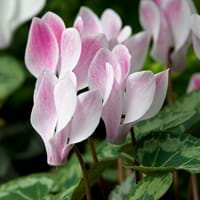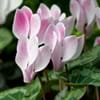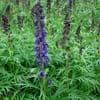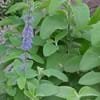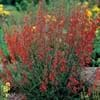Life Span
Perennial
Perennial
Type
Flowering Plants, Tubers
Broadleaf Evergreen
Origin
Europe, Mediterranean Basin, Middle East, North Africa, Somalia
Southeastern Asia, Melanesia, Micronesia, Polynesia, Australia
Types
Cyclamen Africanum, Cyclamen Alpinum, Cyclamen Cilicium, Cyclamen Coum
Bigleaf hydrangea, Hortensia, Smooth hydrangea, Oakleaf hydrangea, Annabelle
Habitat
Alpine Meadows, Rocky areas, Woods
Forest edges, Hillside, Woods
USDA Hardiness Zone
5-9
10-15
AHS Heat Zone
7-1
Not Available
Sunset Zone
15, 16, 17, 18, 19, 20, 21, 22, 23, 24
21,22
Habit
Clump-Forming
Upright/Erect
Flower Color
Pink, Purple, White
White, Purple
Flower Color Modifier
Not Available
Bicolor
Leaf Color in Spring
Several shades of Green
Red, Purple, Dark Green, Pink, Dark Red
Leaf Color in Summer
Not Available
Red, Purple, Dark Green, Pink, Dark Red
Leaf Color in Fall
Green, Silver
Red, Purple, Dark Green, Pink, Crimson, Dark Red
Leaf Color in Winter
Green, Silver
Red, Purple, Dark Green, Pink, Crimson, Dark Red
Leaf Shape
Heart-shaped
Oblovate
Plant Season
Autumn, Spring, Summer, Winter
Spring, Summer, Fall, Winter
Sunlight
Indirect sunlight
Full Sun, Partial Sun, Partial shade
Growth Rate
Medium
Not Available
Type of Soil
Clay, Sandy, Well drained
Loam, Sand
The pH of Soil
Acidic
Neutral, Alkaline
Soil Drainage
Well drained
Average
Bloom Time
Autumn, Spring, Summer
Late Spring, Early Summer, Summer
Tolerances
Not Available
Not Available
Where to Plant?
Container, Ground, Pot
Container, Ground
How to Plant?
From bulbs, Seedlings
Seedlings, Stem Planting
Plant Maintenance
Medium
Medium
Watering Requirements
Do not water frequently, It cannot sustain wet-feet, Keep the ground moist but not water-logged, Prefer drip-irrigation instead of Over-head watering, Water when soil is dry
Not Available
In Summer
Lots of watering
Average Water
In Spring
Moderate
Moderate
In Winter
Average Water
Average Water
Soil pH
Acidic
Neutral, Alkaline
Soil Type
Clay, Sandy, Well drained
Loam, Sand
Soil Drainage Capacity
Well drained
Average
Sun Exposure
Indirect sunlight
Full Sun, Partial Sun, Partial shade
Pruning
Cut or pinch the stems, Prune if you want to improve plant shape, Prune ocassionally, Prune to control growth, Prune when plant is dormant, Remove dead leaves, Remove dead or diseased plant parts
Remove damaged leaves, Remove dead branches, Remove dead leaves
Fertilizers
All-Purpose Liquid Fertilizer
All-Purpose Liquid Fertilizer
Pests and Diseases
Aphids, Botrytis Cinerea, Gray mold, Mice, Mites, Root weevil, Slugs, Snails, Squirrels
Red blotch
Plant Tolerance
Drought
Not Available
Flowers
Yes
Insignificant
Flower Petal Number
Single
Single
Foliage Texture
Medium
Coarse
Foliage Sheen
Matte
Not Available
Attracts
Not Available
Bees, Flies
Allergy
Respiratory problems
Chest tightness, Diarrhea, Dizziness, Nausea, Vomiting
Aesthetic Uses
Showy Purposes
Not Available
Beauty Benefits
Not Available
Not Available
Edible Uses
Unknown
Not Available
Environmental Uses
Air purification
Air purification
Medicinal Uses
Digestive disorders, Menstrual Disorders
Fever, Kidney problems, Urinary tract problems
Part of Plant Used
Root, Stem
Flowers, Root
Other Uses
Showy Purposes, Used as an ointment
Not Available
Used As Indoor Plant
Yes
Not Available
Used As Outdoor Plant
Yes
Yes
Garden Design
Not Available
Container, Cutflower, Feature Plant, Foundation, Houseplant, Tropical
Botanical Name
Cyclamen Persicum
CORDYLINE fruticosa
Common Name
Cyclamen or Florist's Cyclamen
Good Luck Tree, Hawaiian Ti, Tiplant
In Hindi
Sikalemen
Hydrangea
In German
Zyklamen
Hortensie
In French
Cyclamen
Hortensia
In Spanish
Ciclamen
Hortensia
In Greek
κυκλάμινο
υδραγεία
In Portuguese
Cíclame
Hortênsia
In Polish
Cyklamen
Hortensja
In Latin
Cyclamīnos
Hibiscus
Phylum
Anthophyta
Not Available
Class
Dicotyledonae
Not Available
Order
Ericales
Not Available
Family
Primulaceae
Liliaceae
Genus
Cyclamen
Not Available
Clade
Not Available
Not Available
Tribe
Cyclamineae
Not Available
Subfamily
Myrsinoideae
Not Available
Number of Species
Not Available
Importance of Cyclamen and Good Luck Tree
Want to have the most appropriate plant for your garden? You might want to know the importance of Cyclamen and Good Luck Tree. Basically, these two plants vary in many aspects. Compare Cyclamen and Good Luck Tree as they differ in many characteristics such as their life, care, benefits, facts, etc. Every gardener must at least have the slightest clue about the plants he wants to plant in his garden. Compare their benefits, which differ in many ways like facts and uses. The medicinal use of Cyclamen is Digestive disorders and Menstrual Disorders whereas of Good Luck Tree is Fever, Kidney problems and Urinary tract problems. Cyclamen has beauty benefits as follows: Not Available while Good Luck Tree has beauty benefits as follows: Not Available.
Compare Facts of Cyclamen vs Good Luck Tree
How to choose the best garden plant for your garden depending upon its facts? Here garden plant comparison will help you to solve this query. Compare the facts of Cyclamen vs Good Luck Tree and know which one to choose. As garden plants have benefits and other uses, allergy is also a major drawback of plants for some people. Allergic reactions of Cyclamen are Respiratory problems whereas of Good Luck Tree have Chest tightness, Diarrhea, Dizziness, Nausea and Vomiting respectively. Having a fruit bearing plant in your garden can be a plus point of your garden. Cyclamen has no showy fruits and Good Luck Tree has showy fruits. Also Cyclamen is flowering and Good Luck Tree is not flowering . You can compare Cyclamen and Good Luck Tree facts and facts of other plants too.
